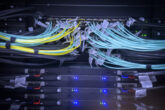August 14, 2018
Battlefield Internet
A Plan for Securing Cyberspace
Cyberspace has been recognized as a new arena for competition among states ever since it came into existence. In the United States, there have long been warnings of a “cyber–Pearl Harbor”—a massive digital attack that could cripple the country’s critical infrastructure without a single shot being fired. Presidential commissions, military task force reports, and congressional investigations have been calling attention to such a risk for decades. In 1984, the Reagan administration warned of the “significant security challenges” of the coming information age. And just this year, Dan Coats, the director of national intelligence, said of such threats, “the lights are blinking red.”
Yet the Internet has always been much more than a venue for conflict and competition; it is the backbone of global commerce and communication. That said, cyberspace is not, as is often thought, simply part of the global commons in the way that the air or the sea is. States assert jurisdiction over, and companies claim ownership of, the physical infrastructure that composes the Internet and the data that traverses it. States and companies built the Internet, and both are responsible for maintaining it. Actions taken in the public sector affect the private sector, and vice versa. In this way, the Internet has always been hybrid in nature.
So, accordingly, is the real cyberwar threat. It turns out that for all the increasingly vehement warnings about a cyber–Pearl Harbor, states have shown little appetite for using cyberattacks for large-scale destruction. The immediate threat is more corrosive than explosive. States are using the tools of cyberwarfare to undermine the very foundation of the Internet: trust. They are hacking into banks, meddling in elections, stealing intellectual property, and bringing private companies to a standstill. The result is that an arena that the world relies on for economic and informational exchange has turned into an active battlefield.
Read the Full Article at Foreign Affairs
More from CNAS
-
Defense / Indo-Pacific Security / Technology & National Security
To Compete with China on Military AI, U.S. Should Set the StandardsThe United States has an opportunity to lead in global norms and standards for military AI at a critical moment, when the foundations laid today could shape how militaries use...
By Jacob Stokes, Paul Scharre & Josh Wallin
-
Defense / Energy, Economics & Security / Technology & National Security
The Outlook CEO Perspectives on Risk, Resilience and ReturnsJoin David Schwimmer and Richard Fontaine, CEO of the Center for New American Security, as they explore the current national security landscape and its impacts on global econo...
By Richard Fontaine
-
Technology & National Security
The Trump-Xi Truce Shows Who Really Holds the LeverageThis article was originally published in The Australian Financial Review. Since President Trump returned to office, the U.S.-China relationship has lurched between confrontat...
By Ruby Scanlon
-
Technology & National Security
NOTUS Perspectives: AI Requires Massive Allocations of Energy. Will Other Sectors Suffer?On the current trajectory, the government may need to prioritize energy for AI over other uses to ensure the United States remains the global leader in advanced AI....
By Janet Egan




